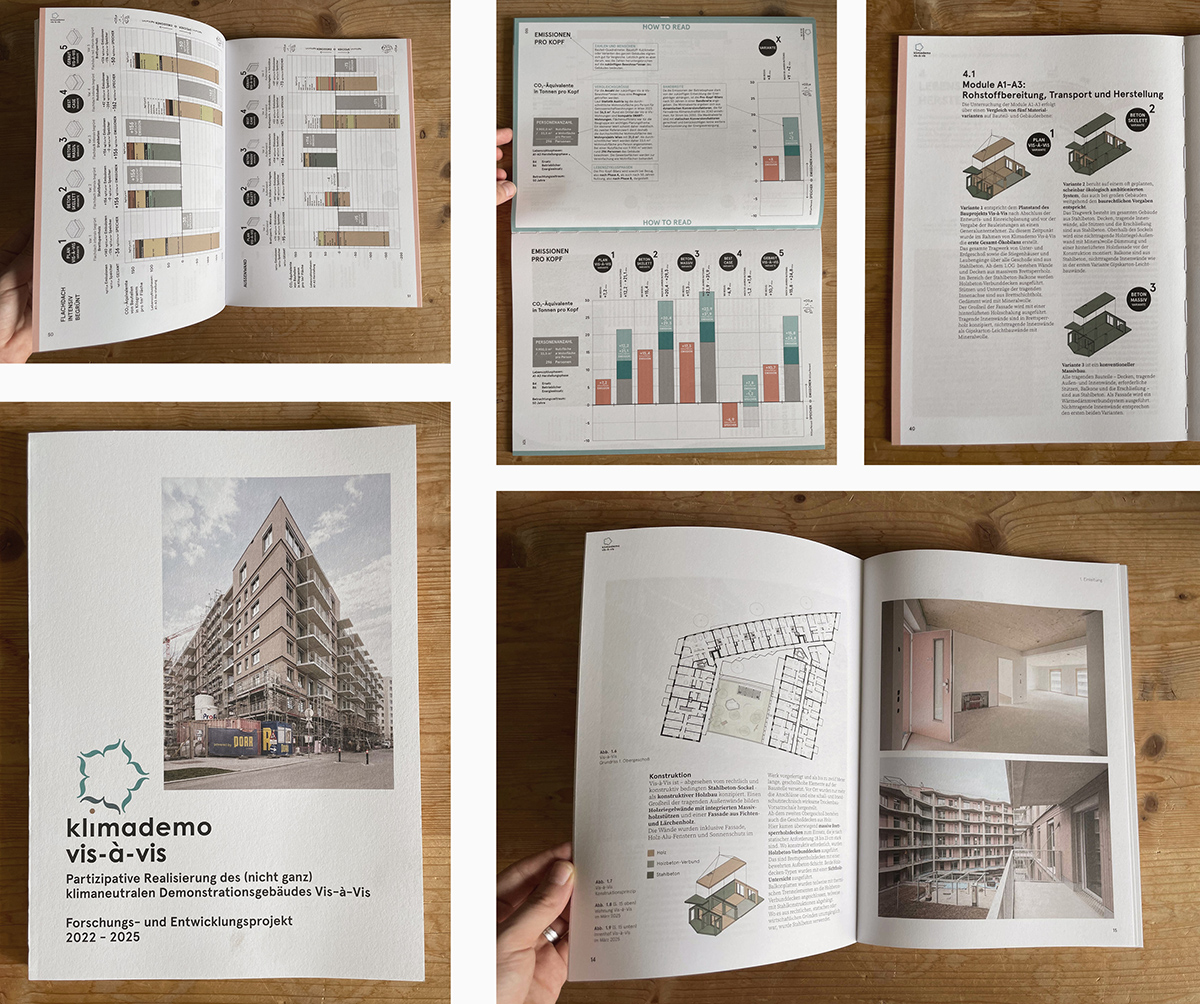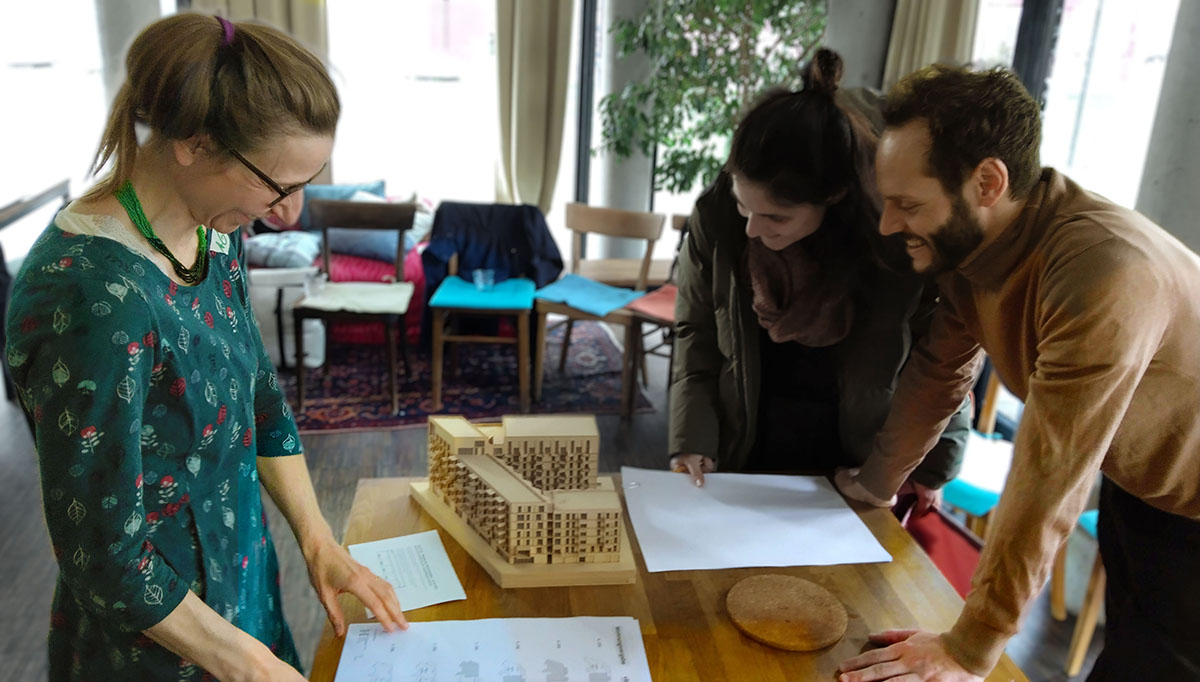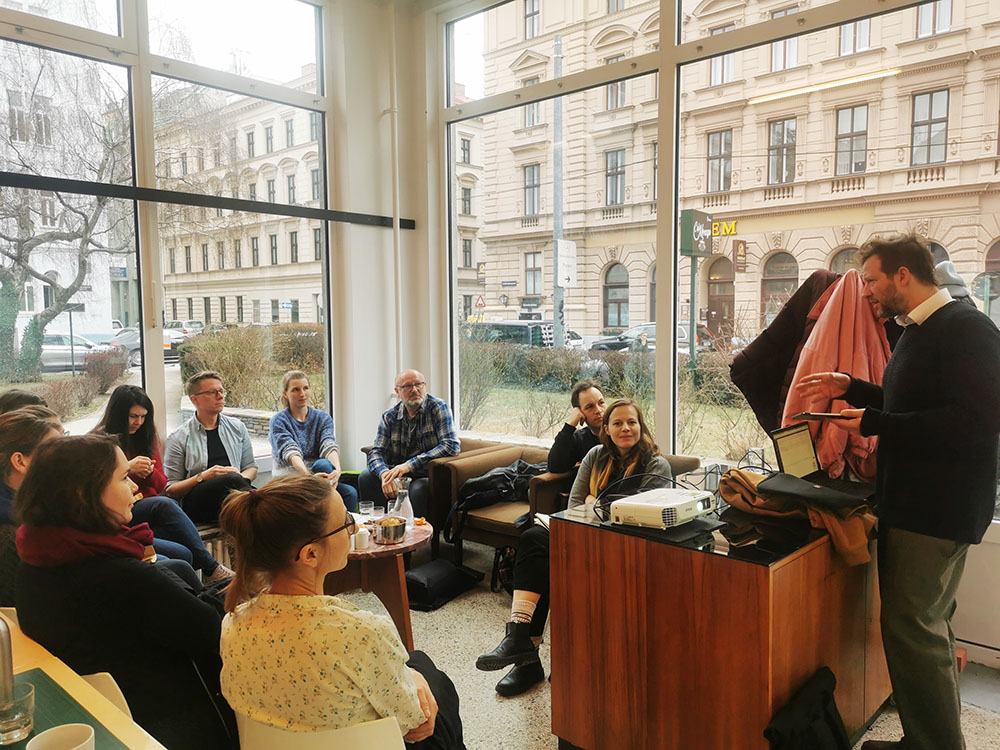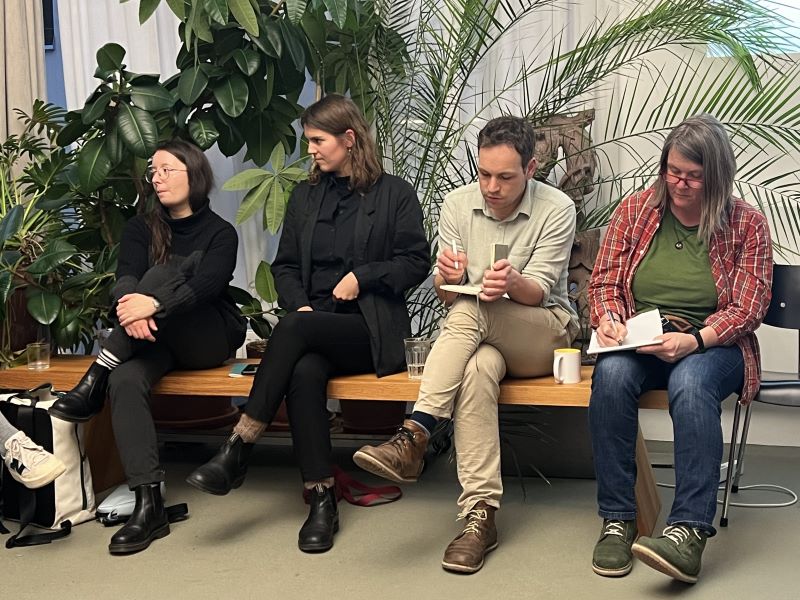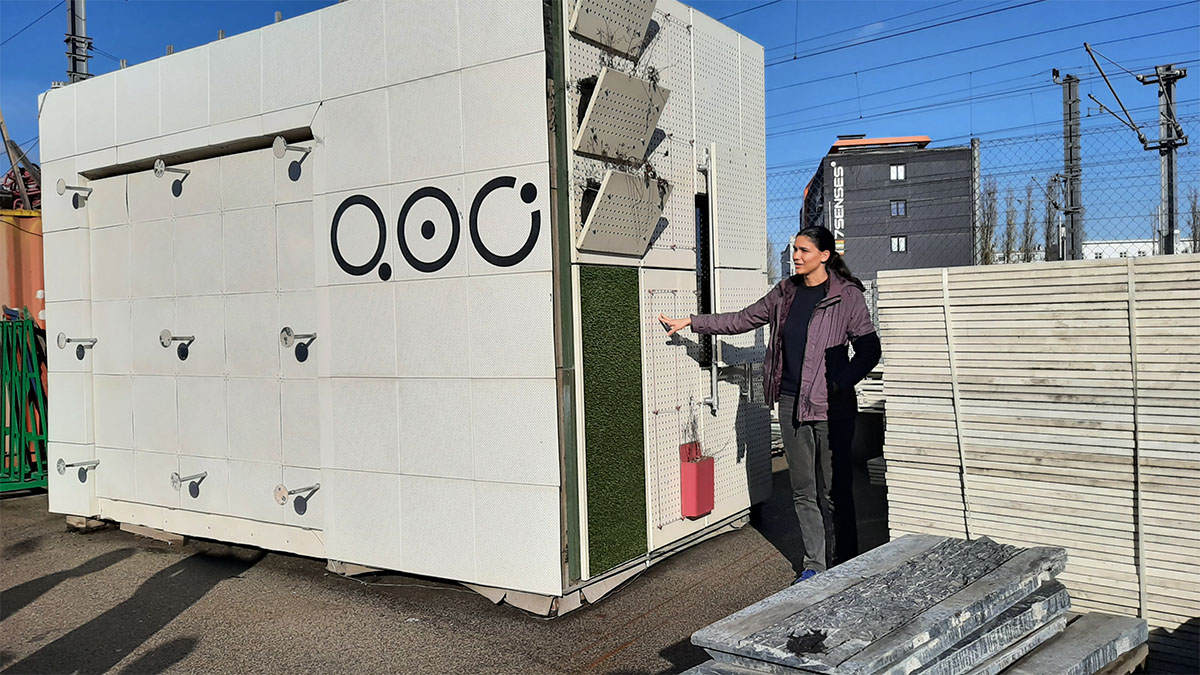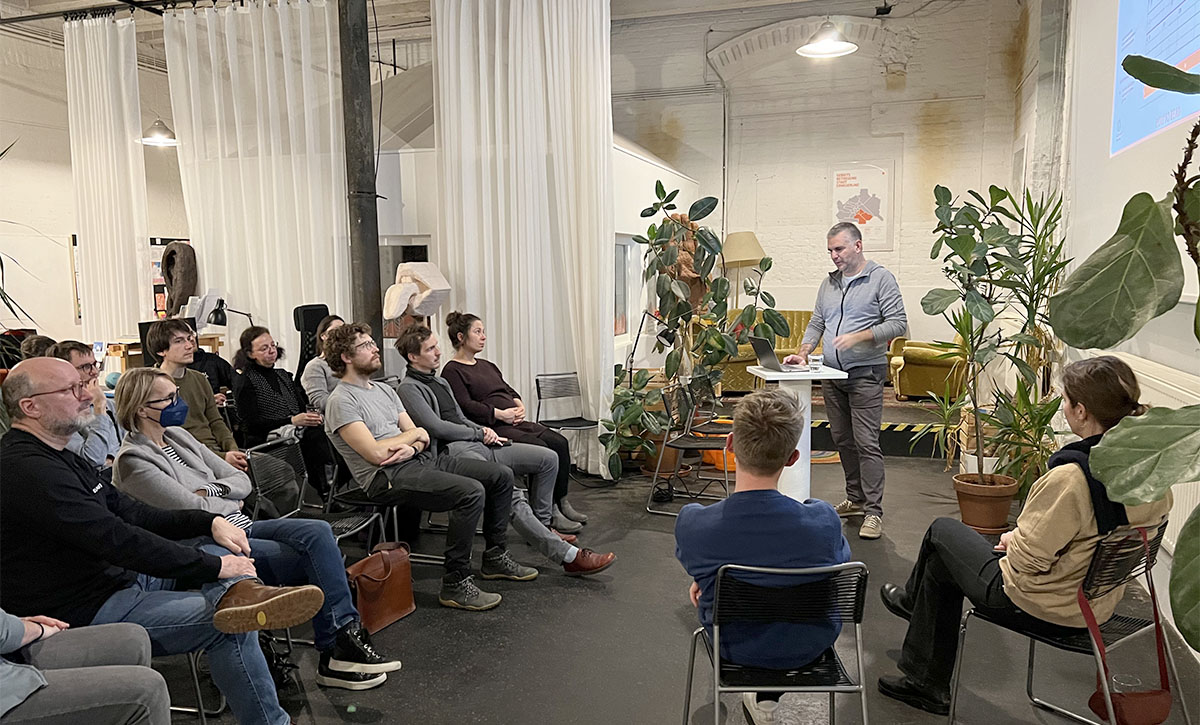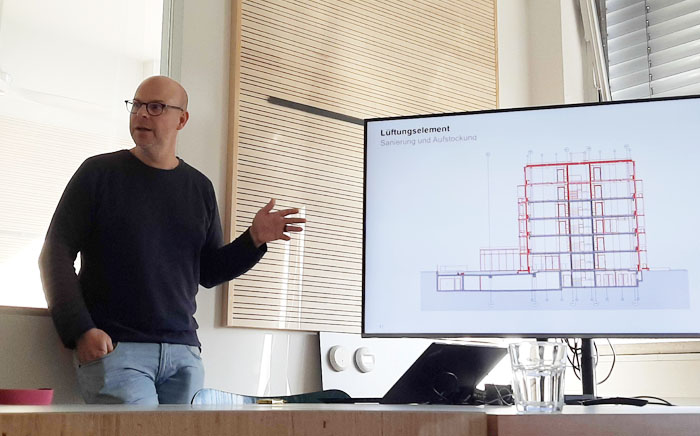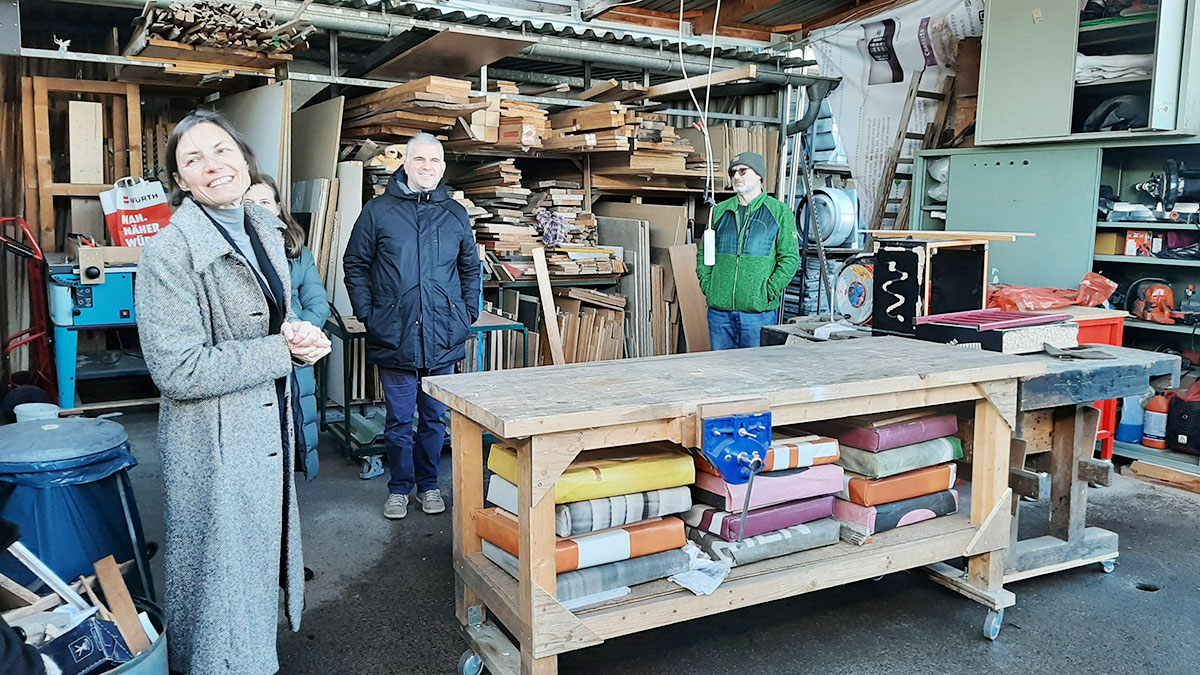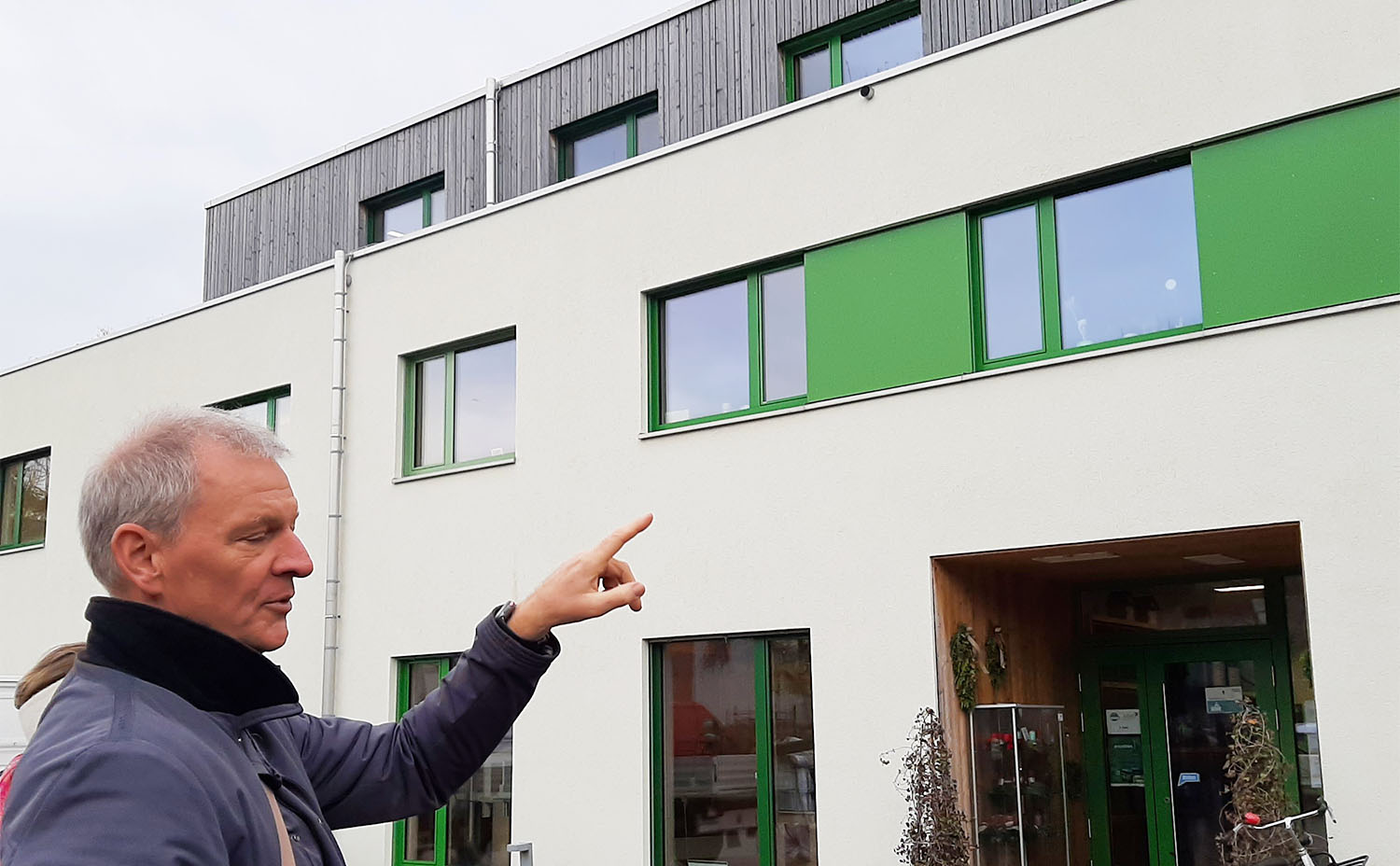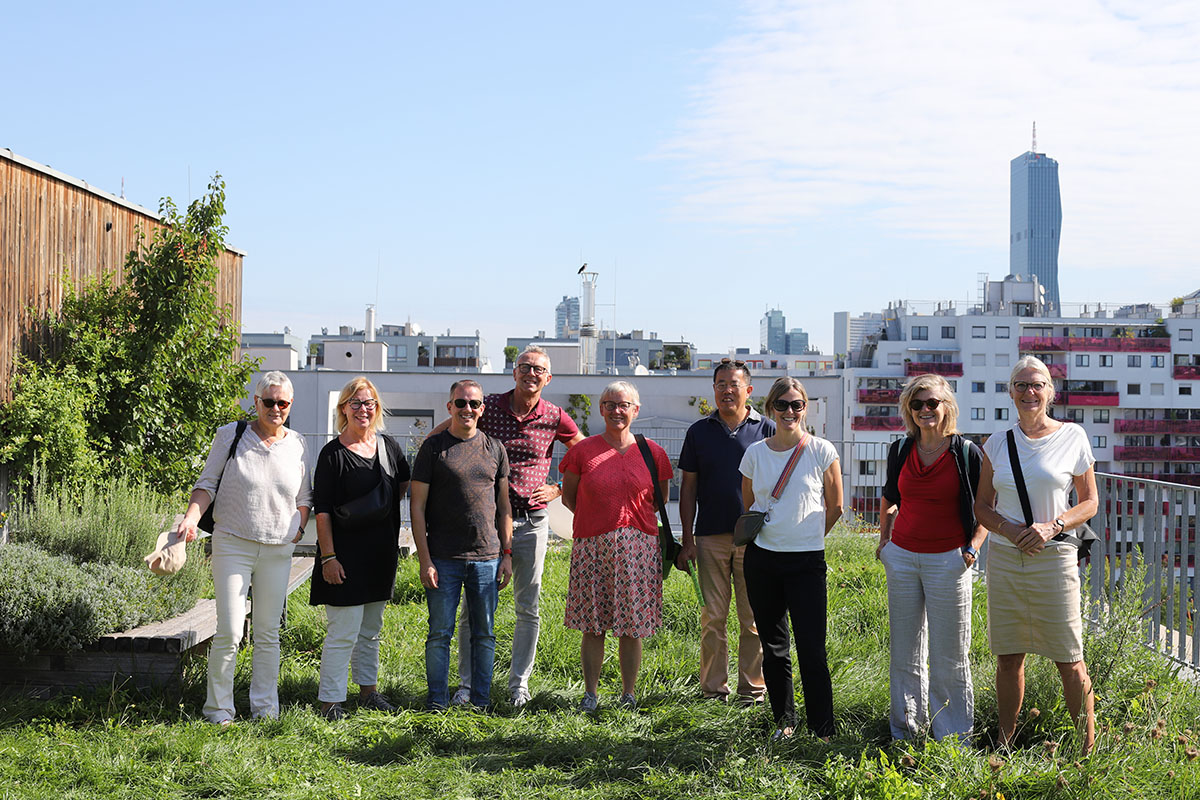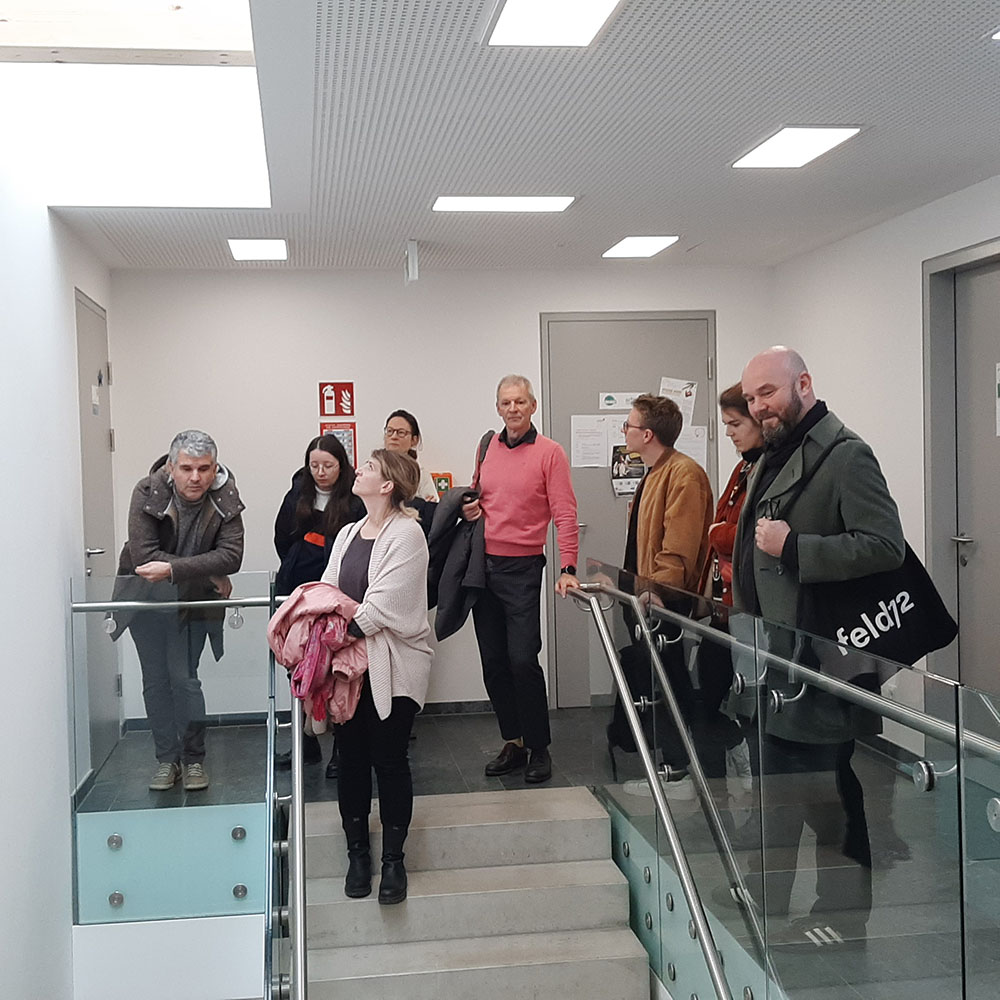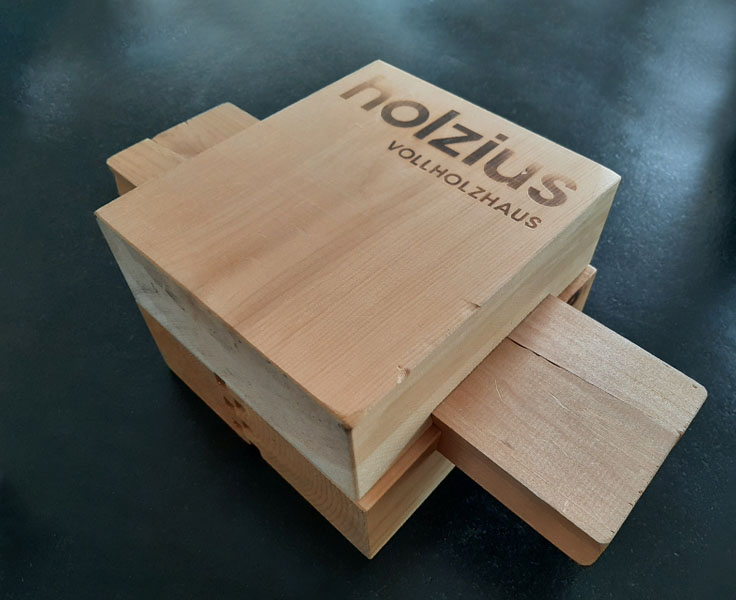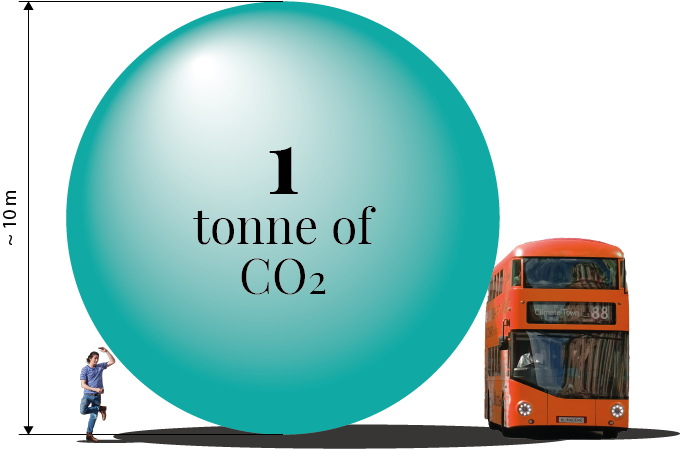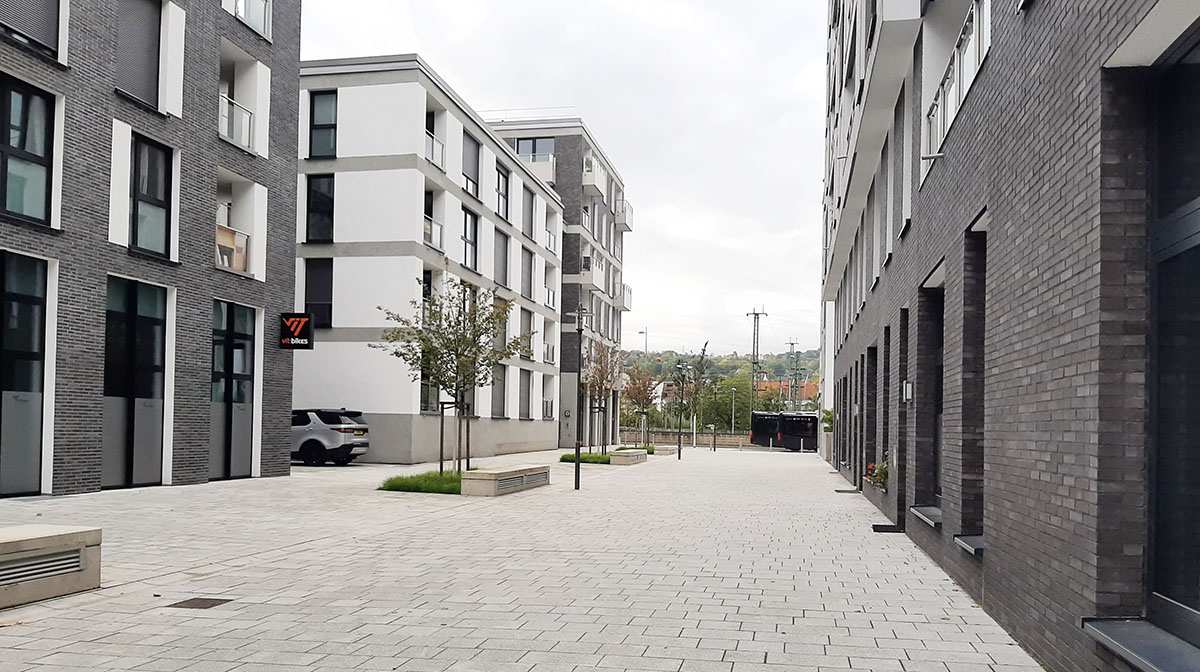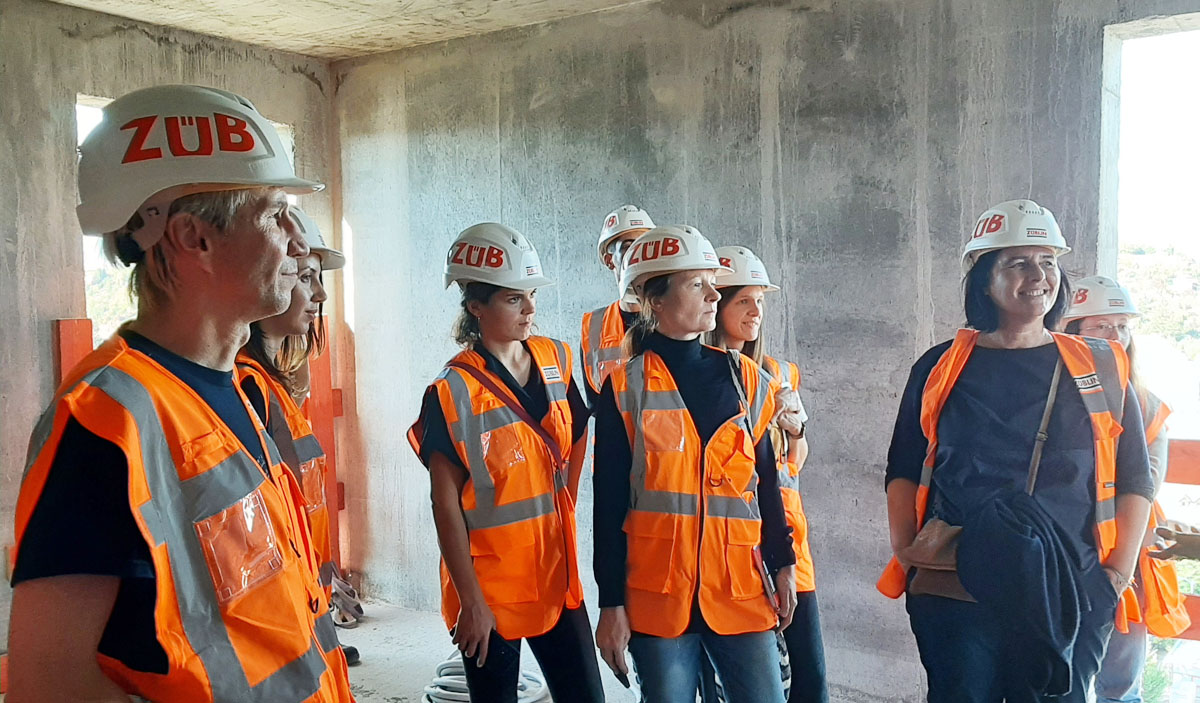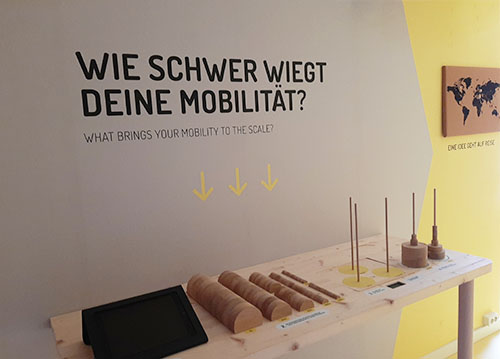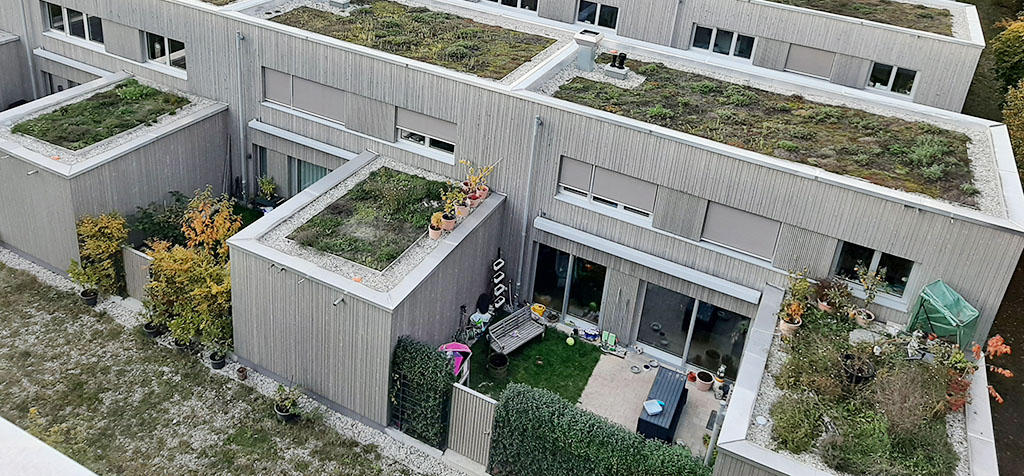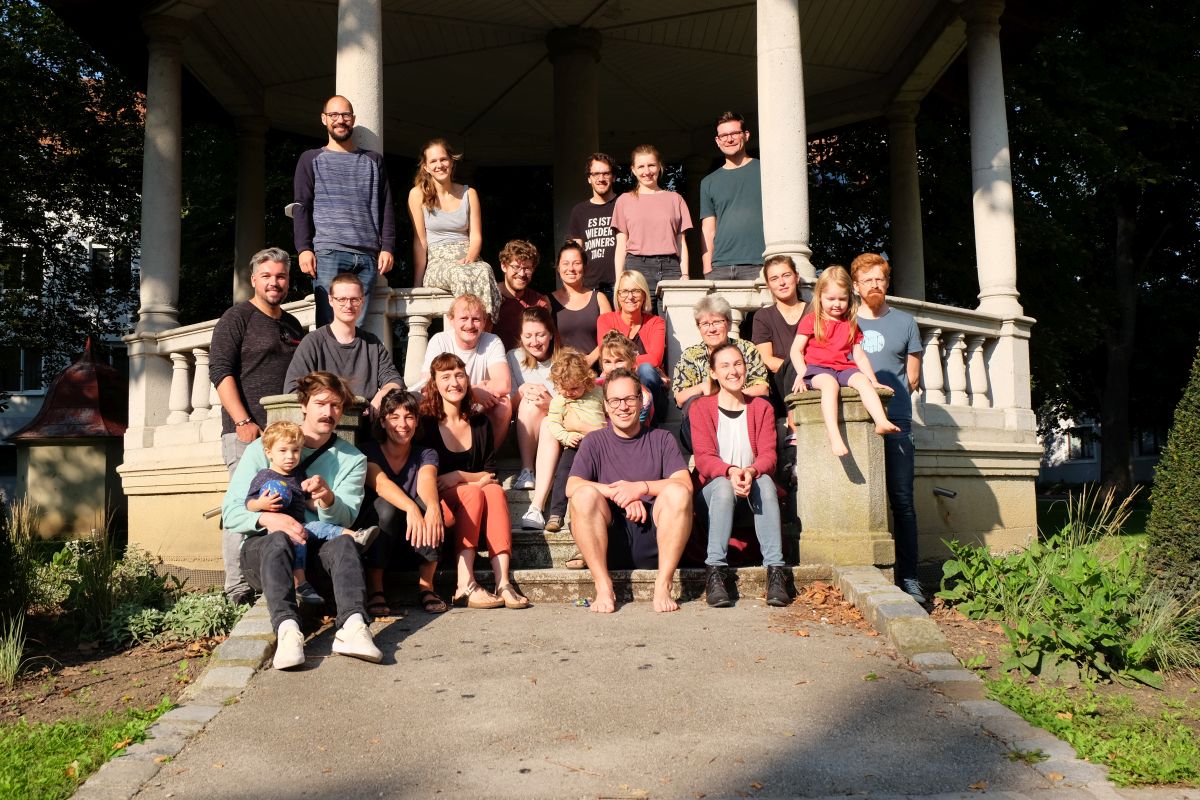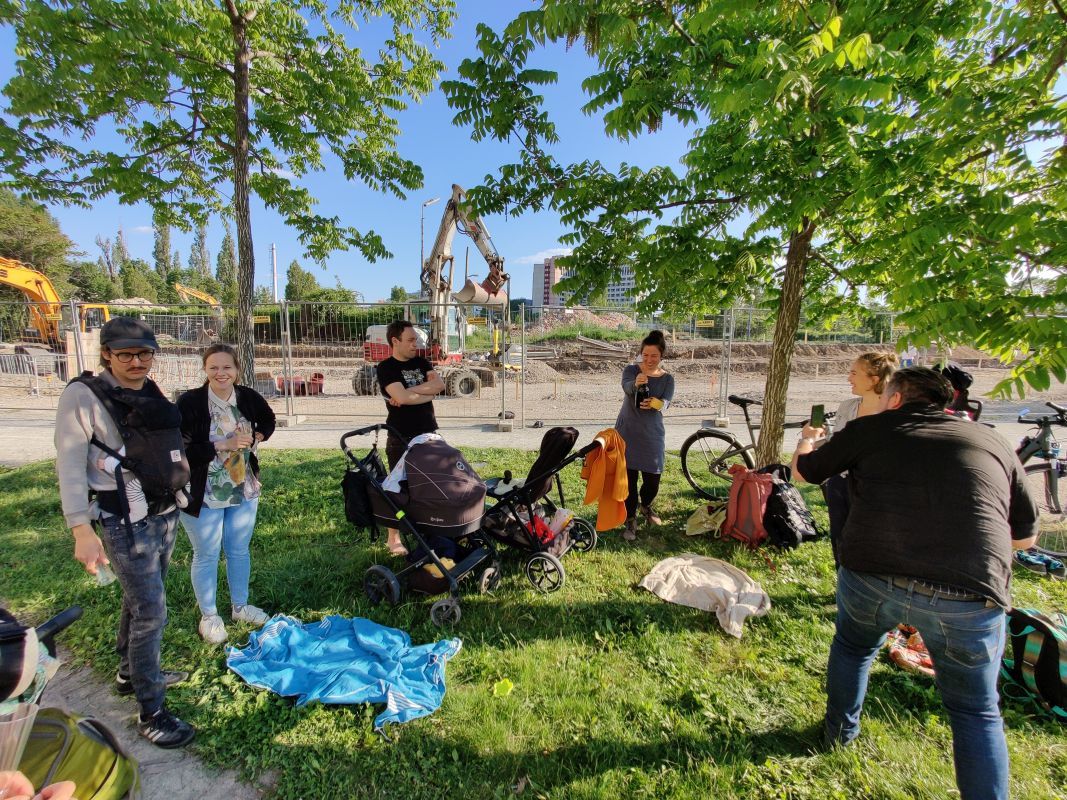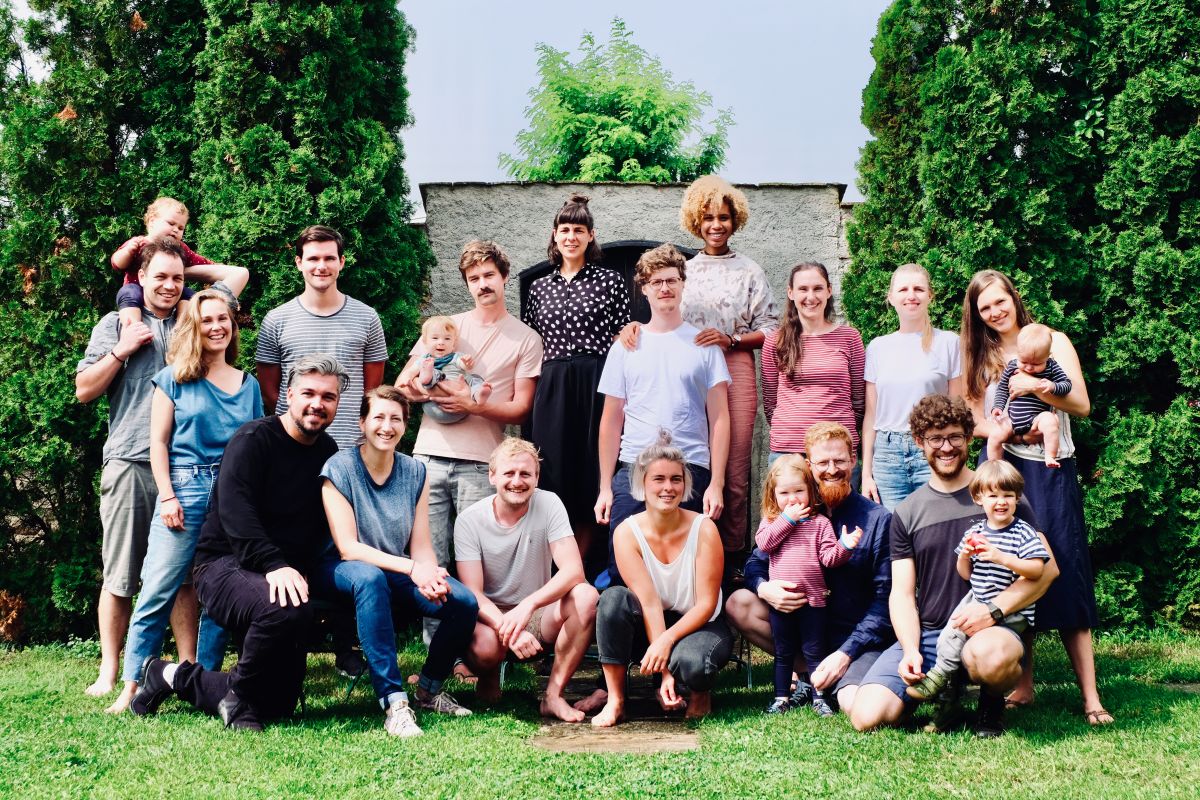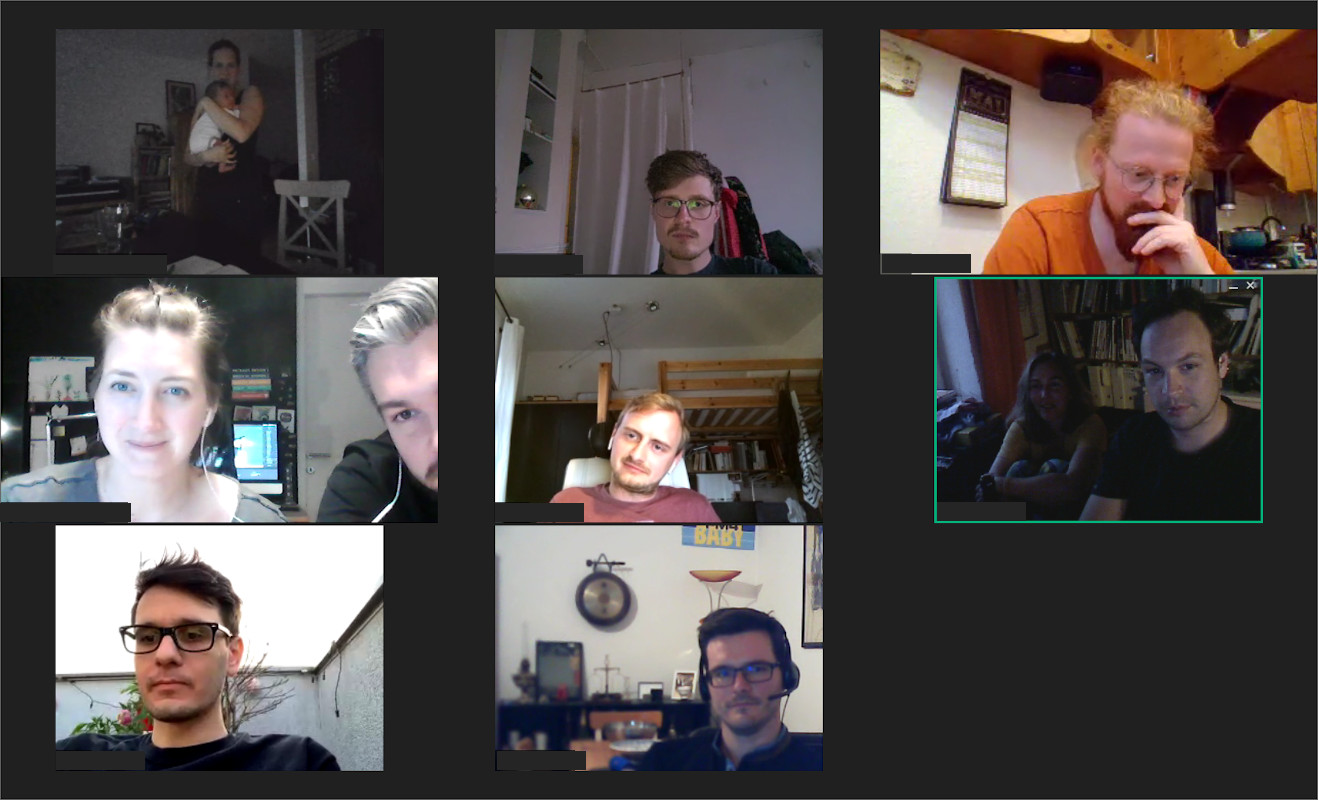English { } Deutsch
Mountains don’t have cardboard
Why do building materials get used only once?
As a team of people researching climate neutral building, we have been struggling with the theme of demolition. It is a bit of a blind spot, we know or think little about it. In our calculation model we focus on phase A of planning and building and the using phase B. That is what we can influence. Still, we calculate demolition in, after a standard period of 50 years. This is called phase C. (As somebody approaching 59, I find such a short life cycle in itself is a bit disturbing and hope to extend my own “phase B” for some decades more.)
Because we know so little about demolition and possibilities for re-using parts of buildings, we visited experts on the matter from the contractor PORR. It was a lovely exchange. They told us how they work and the theory behind it. There has been an impressive progress in knowledge about the materials and their recycling potential since I went to university. Still a lot remains to be done. The tool of Life Cycle Analysis does not seem to be practical to see if materials are fit for reuse. But it is not just a matter of knowledge and data. There seems to be a lack of consciousness of sustainability issues related to demolition issues, resulting in types of constructions where many different materials are glued together. That is very difficult to take apart for renovation or reuse. In older buildings, there is little documentation of the materials that have been used. It is as a result difficult to make use in another setting of for instance the steel of an old hall. How to calculate what the construction can still carry? How to reuse things on another spot where the forces from the wind are different? It is a challenge for the engineers to include such materials.
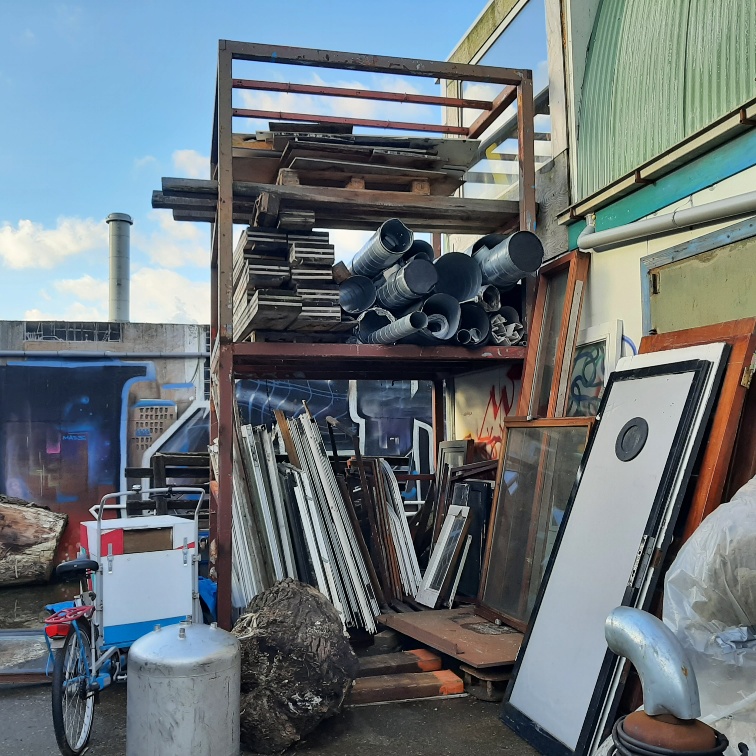
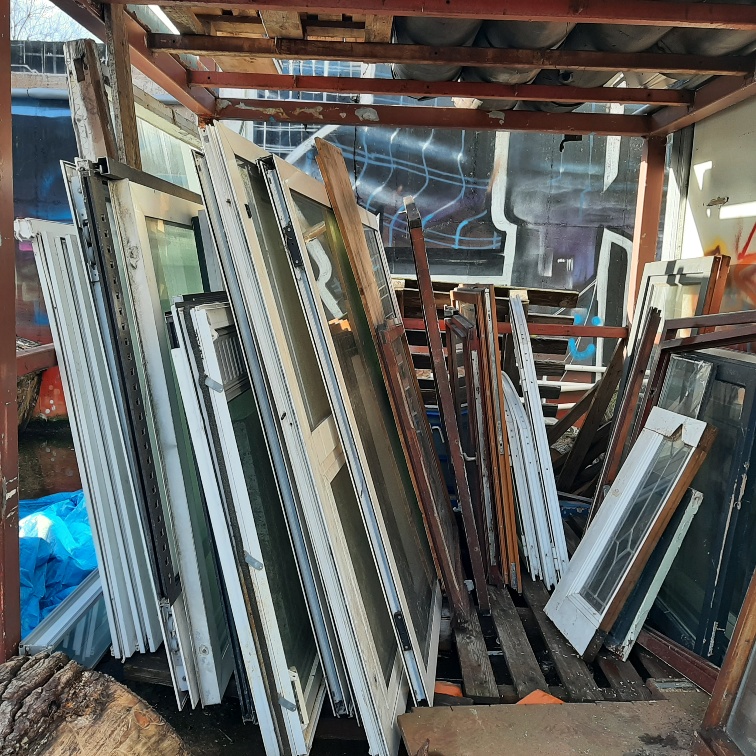
Re-use Materials in Utrecht: „de Stadsjutters“. Photo: Vis-à-Wien
Burning down antique oak floors… because it is cheap?
By lack of answers, the easiest solution mostly is just knocking things down and ‘transforming’ the materials to ’thermal energy’. Or in other words, taking antique oak floors and burning them. For as long as we are still using fossil fuels, this gives even a kind of compensation-bonus in the carbon emission calculation. The logic being, that if you put the wood in the oven, no fossil fuels are burned. Instead of that insanity, a kind of cascade recycling is preferable: re-use this wood as facade panels, in a next life apply it shredded to isolation materials and in yet another lifetime as garden path coverage for instance. But in practice that happens rarely. And that has to do with awareness on the issue. According to the people we talked to, the consciousness is higher in Germany than in Austria.
As with many sustainability issues, the largest obstacle is money. Dismantling a building for reuse requires qualified staff, who need a higher wage and more time than is available in a quick demolition. Time is a stingy issue when it comes to recycling building materials. A plastic bottle is used in a day, a building lasts decades or even centuries. We must think about how our buildings can be dismantled after use. And we need to learn now how to take apart elements that were introduced in the sixties and seventies. How to deal with plasterboard for instance? The gypsum can be recycled and the producers are thinking about technical solutions. They are well aware that in about 30 years the natural stock of gypsum will be getting tight.
This promotion film shows how it works (Youtube).
That sounds reassuring, but in practice such plants run on waste boards that have not been used in a building yet. It is but a very small part of the total production. Demolition materials are still mainly deposited. The boards may have tiles glued to them and there are screws and cardboard that need to be removed. That is costly and complicated. The mountains from which the raw materials are extracted don’t have cardboard or screws though, which makes it the easier option. In addition, dumping the old materials is not expensive enough to make recycling competitive with using new materials. So, for the time being, new mountains of dumped plasterboard rise up, while somewhere else gypsum gets dug out, just because it is cheaper and simpler. What a pity, what a waste.
Romance over recycling work
Hearing that I had to think of the site in Frankfurt where after the war, students were extracting building materials from bombed houses. The man who would become my father, was carrying away the wood from which my mother was extracting nails all day. She wasn’t really motivated by ideals on the environment or reconciliation. It was the idea of a journey abroad, sponsored by the Americans, that sparked the interest of most participants. And in their case, the trip to Germany was the start of their common life journey.
The wood they worked on at the start of their romance was available for reuse in construction. The cheap labour of the students during this trip allowed for a rate of recycling that in our prosperous times seems to have become impossible.

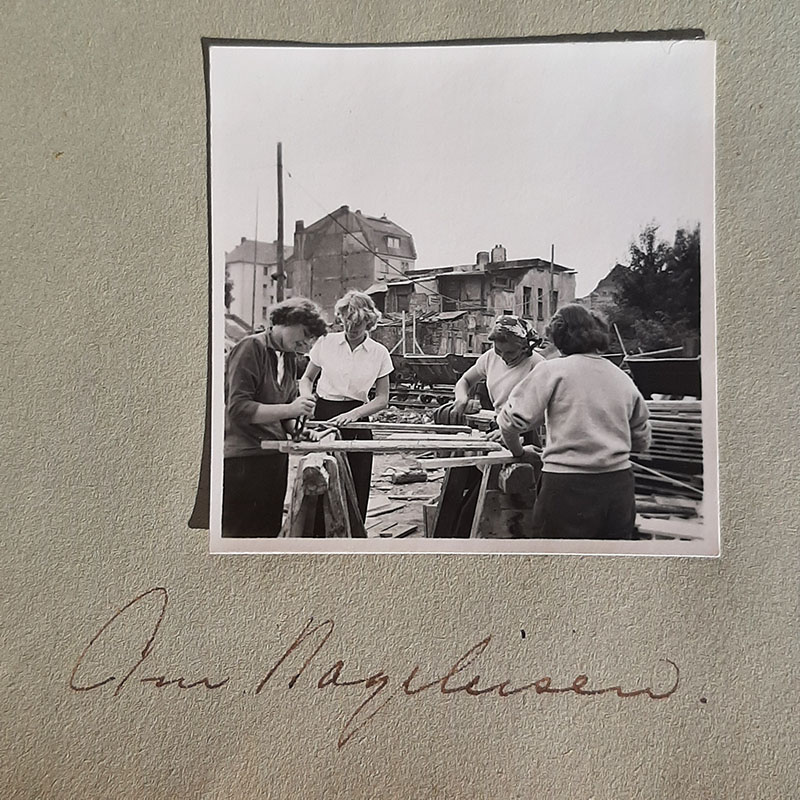
Making materials re-useable back when labour was cheap. Photos: Maria Lammens
Good timing is the key to reusing building materials
How can we get access to good reuse materials before they go to a dump or oven? The key seems to be in planning and organising. An exchange of information is crucial to assure that precious materials can be ‘harvested’ in the short time slot available before demolition. Once taken out the materials need to be stored somewhere. Collaboration with our new friends in PORR might help us in being informed where and when old buildings will be demolished. Next step is finding a way of organising the harvest and storage of whatever is in there that can be of use. Quite a challenge, but one that is interesting to take on I think. To be continued…




